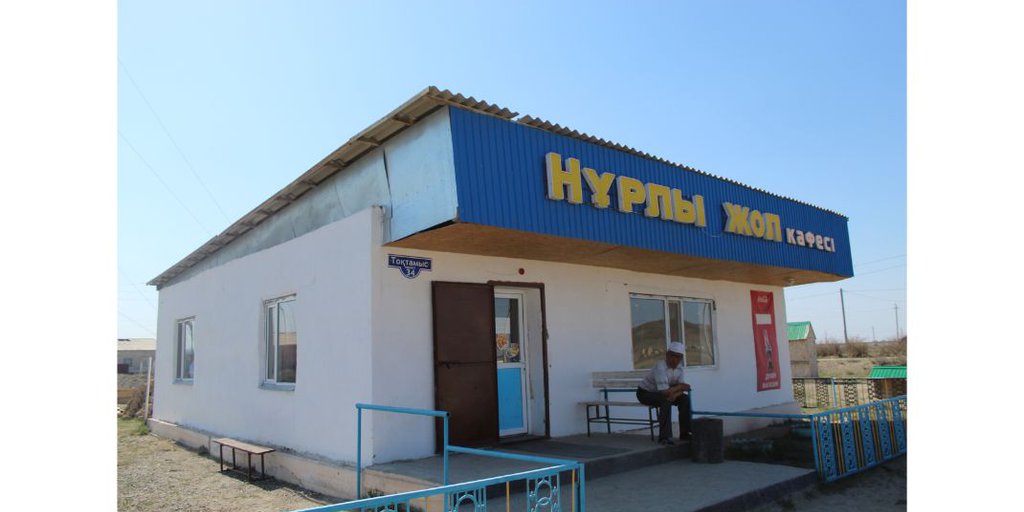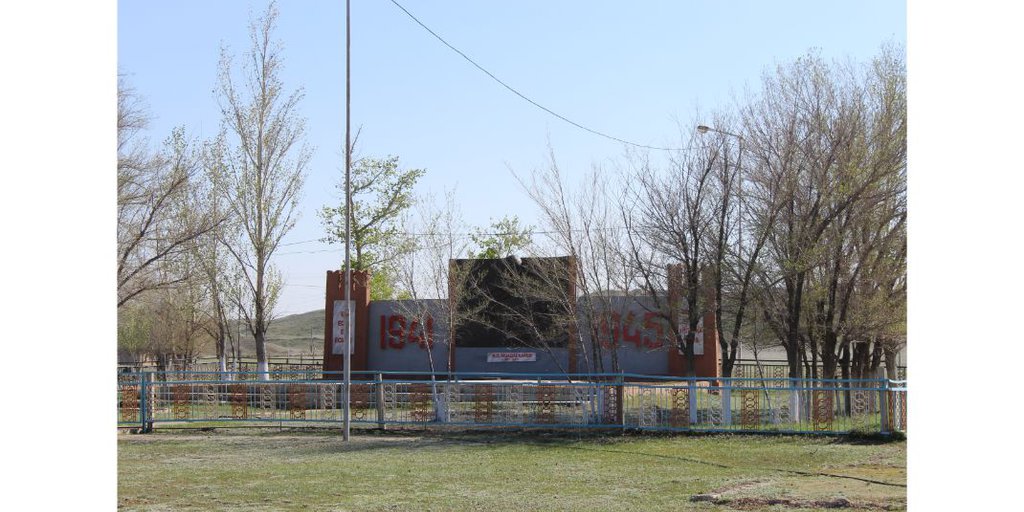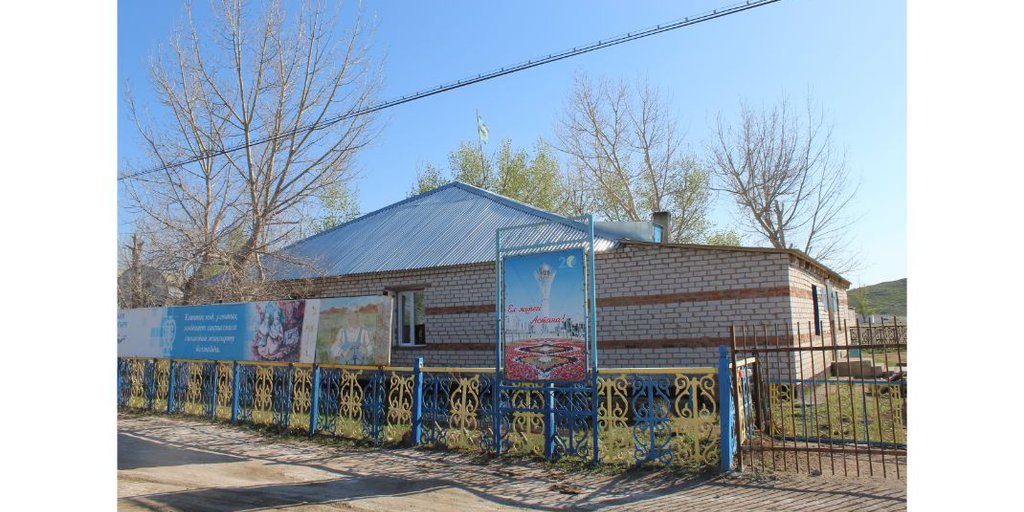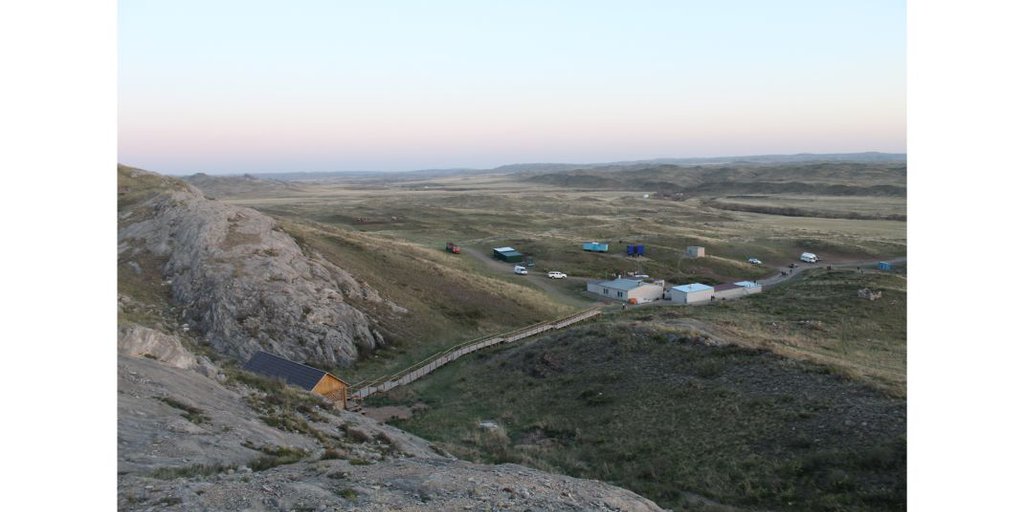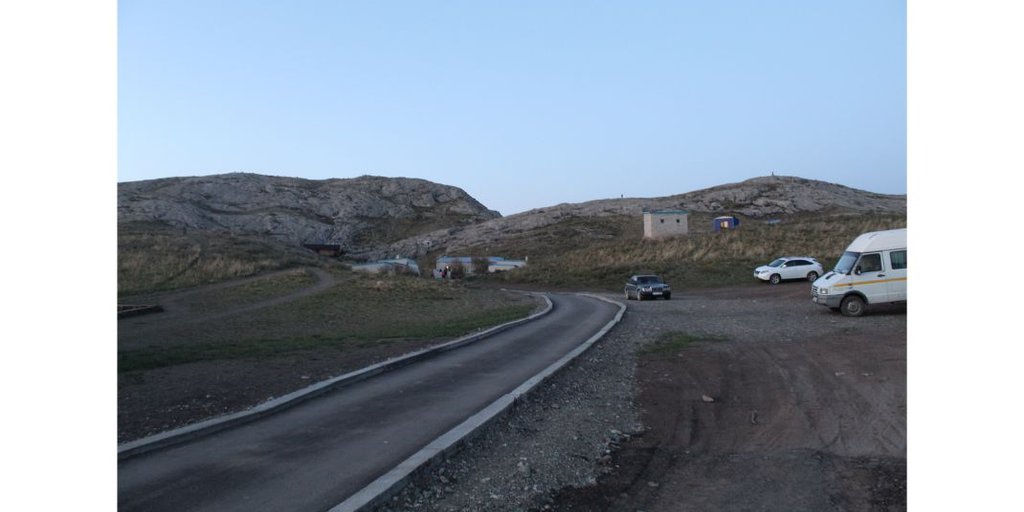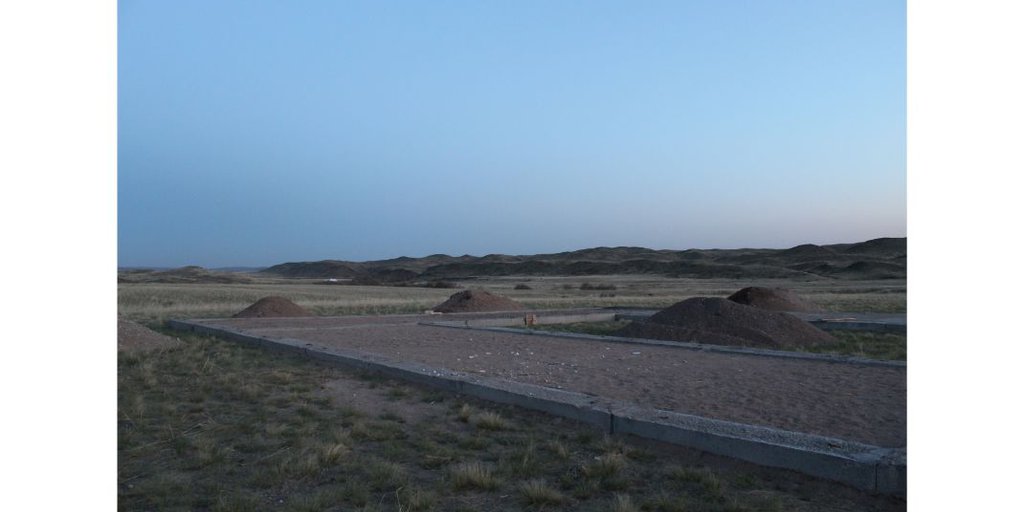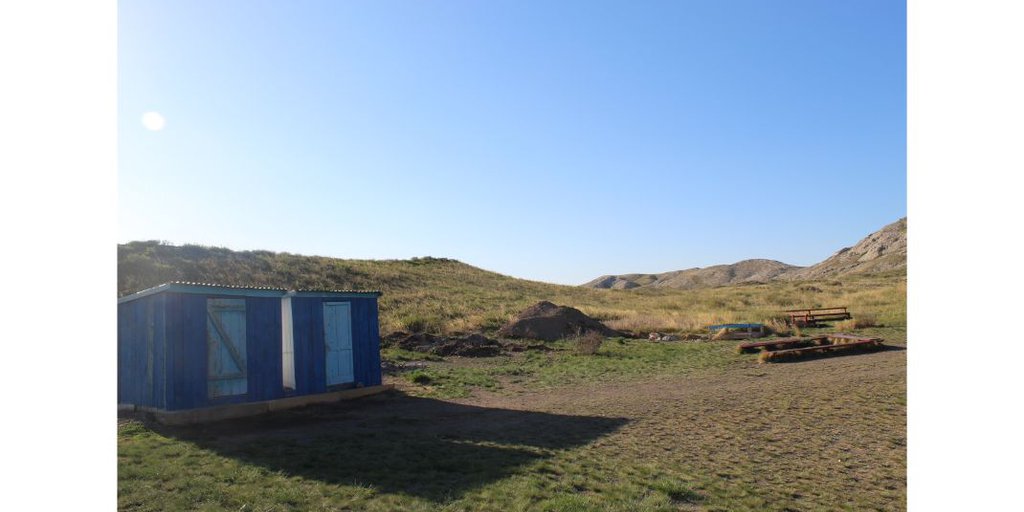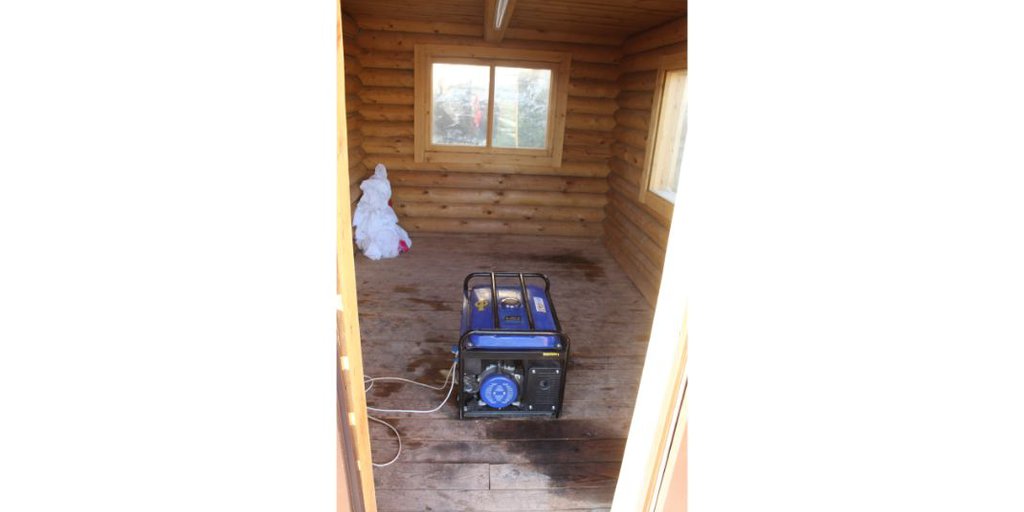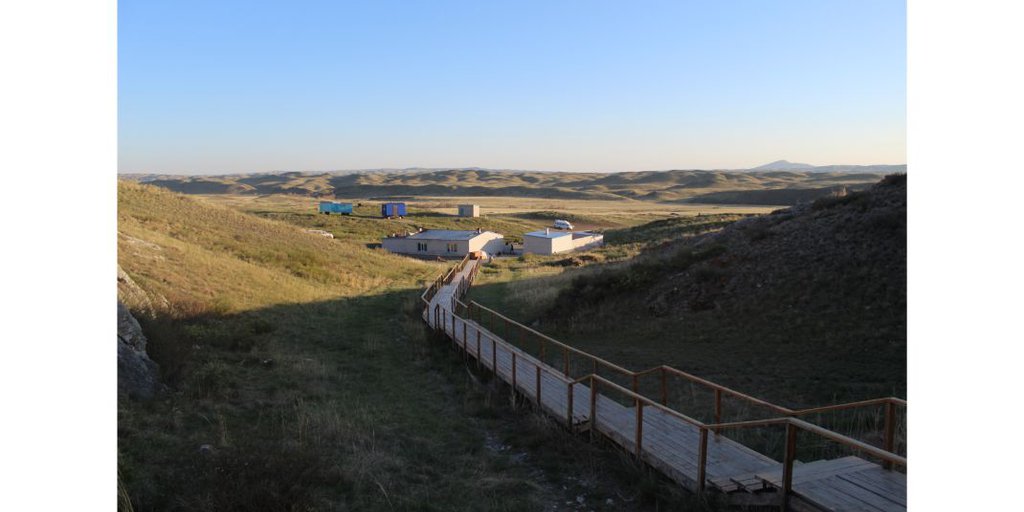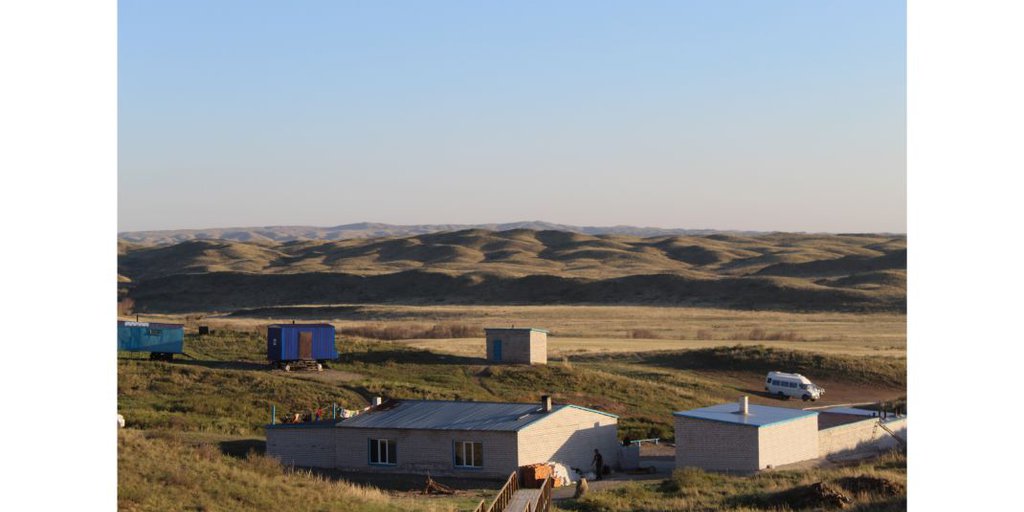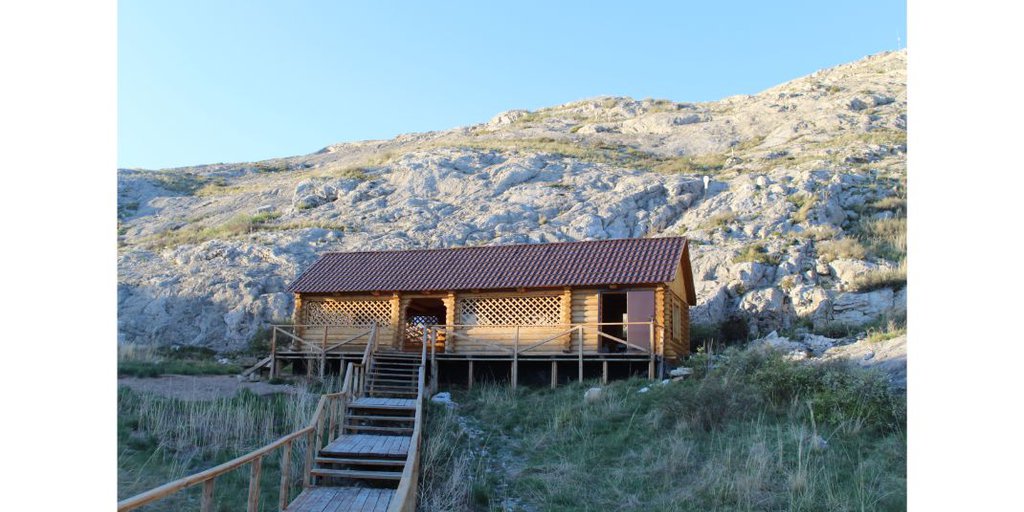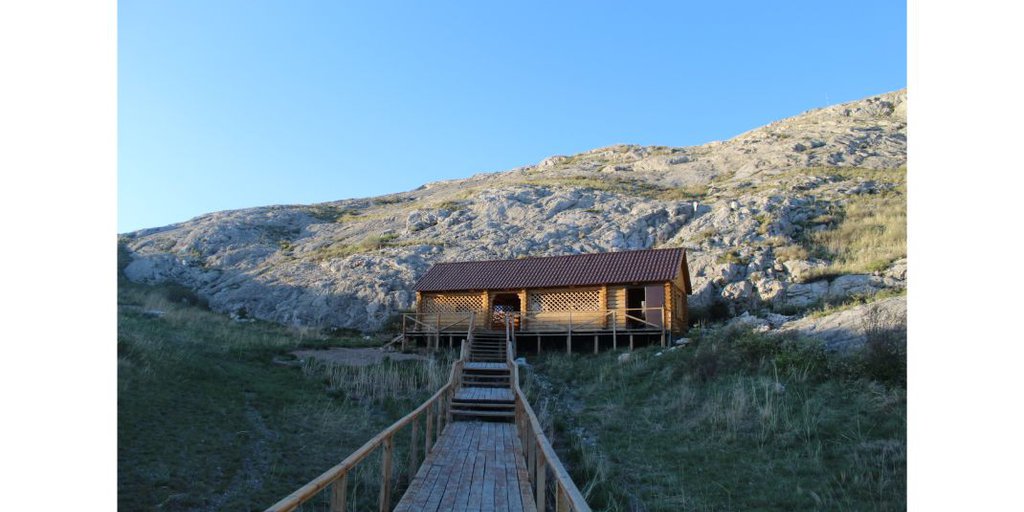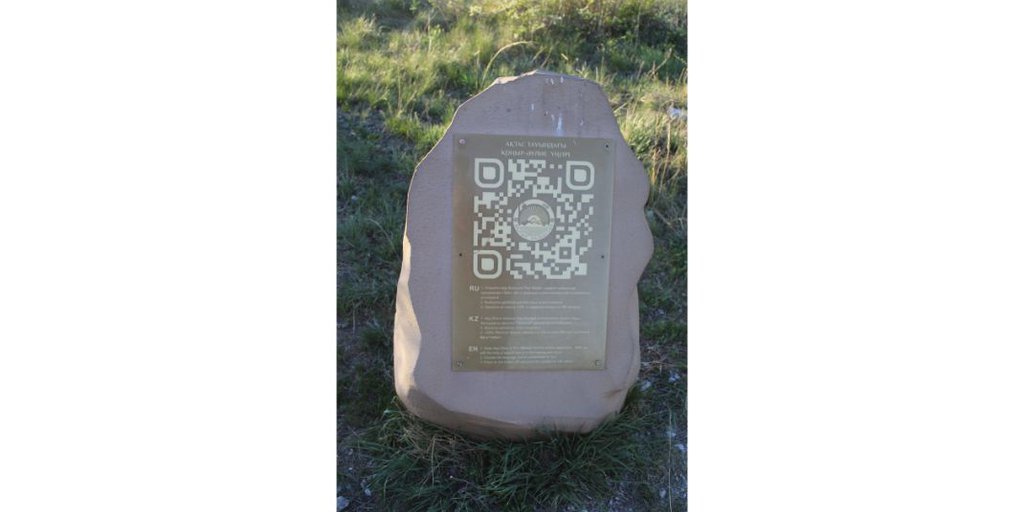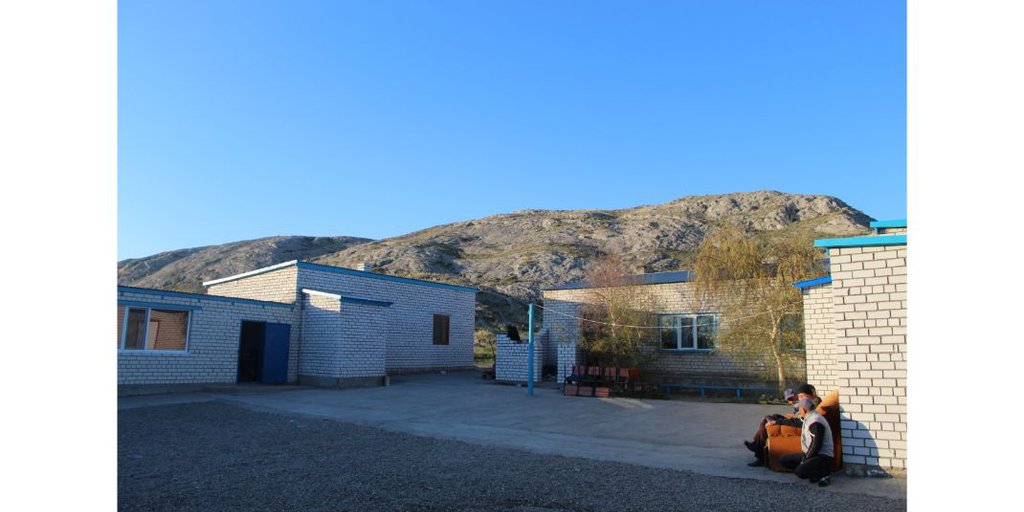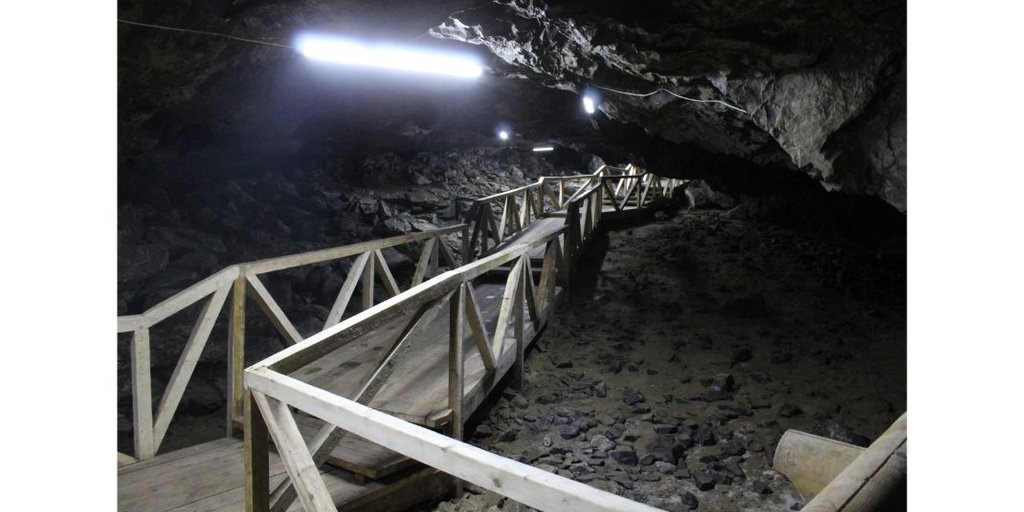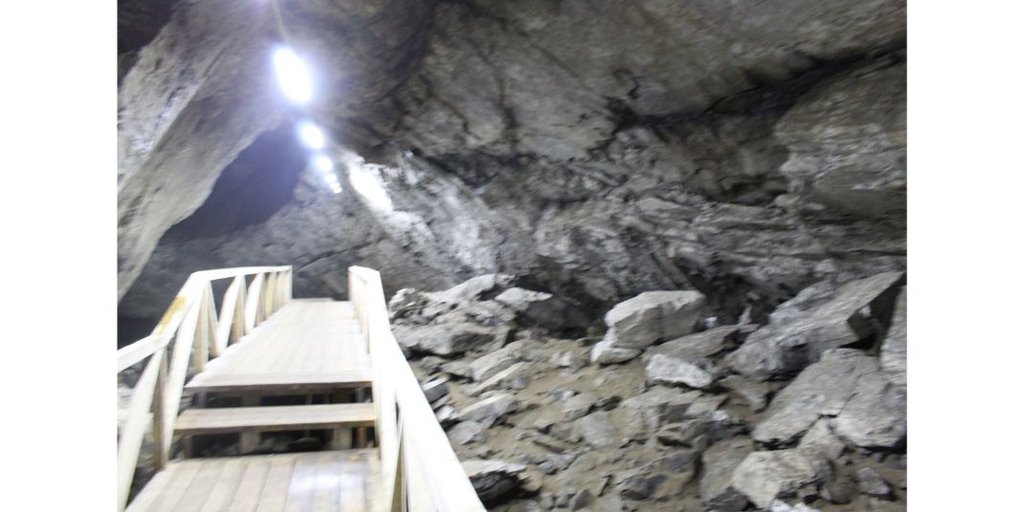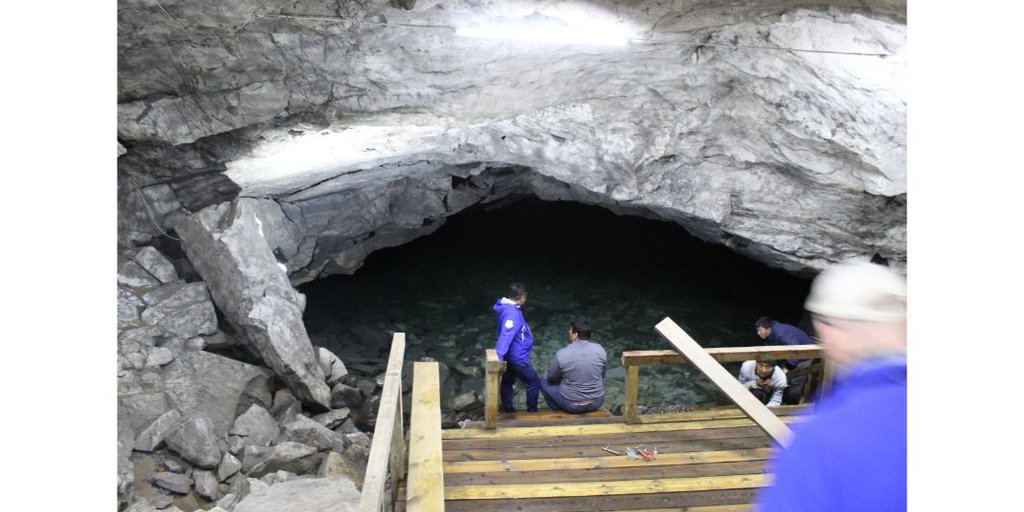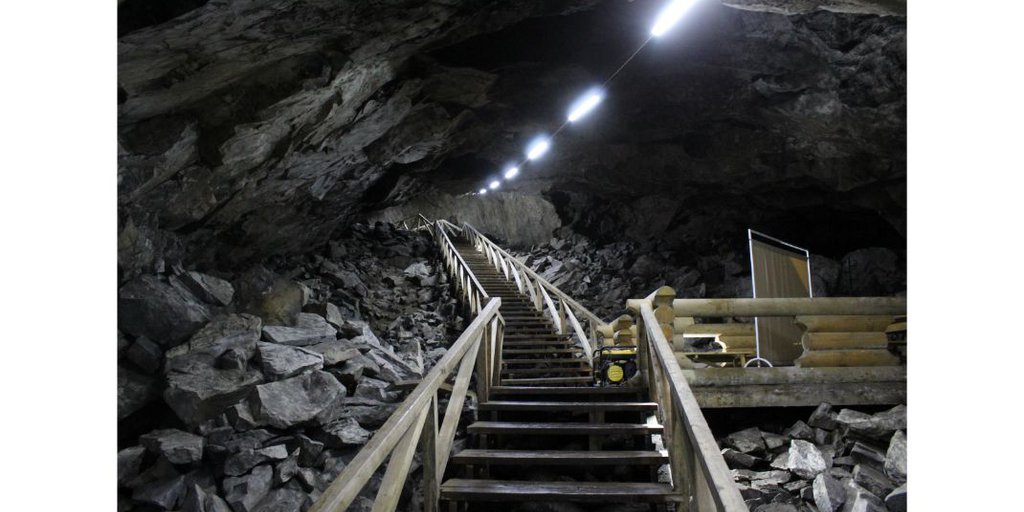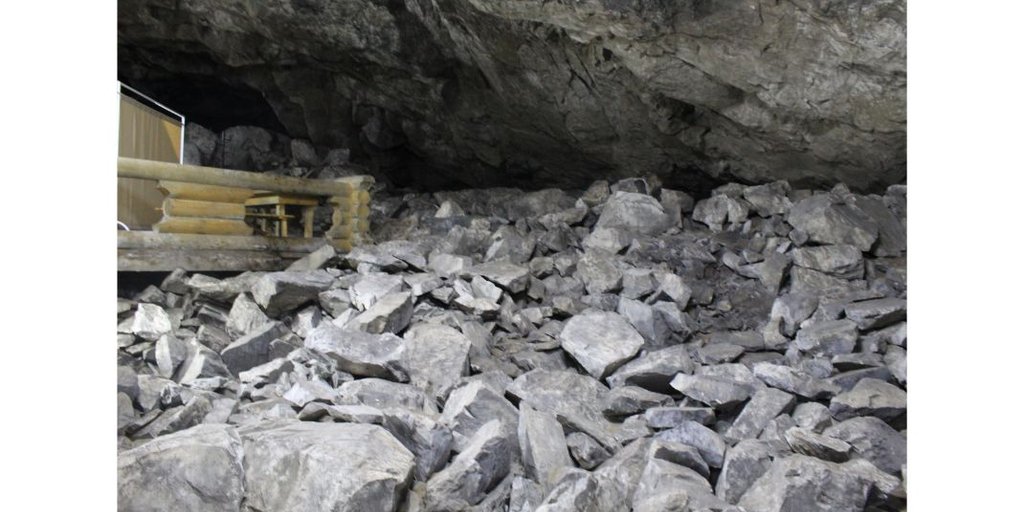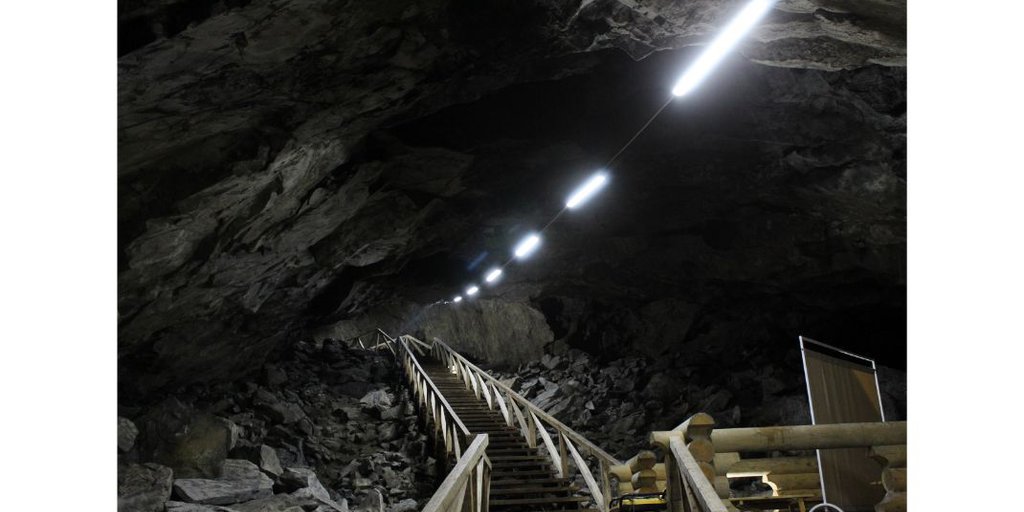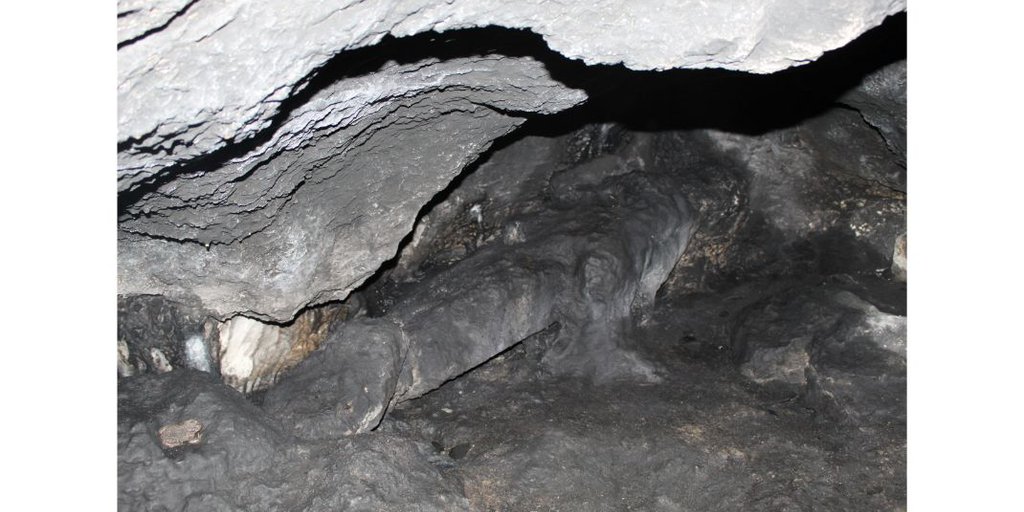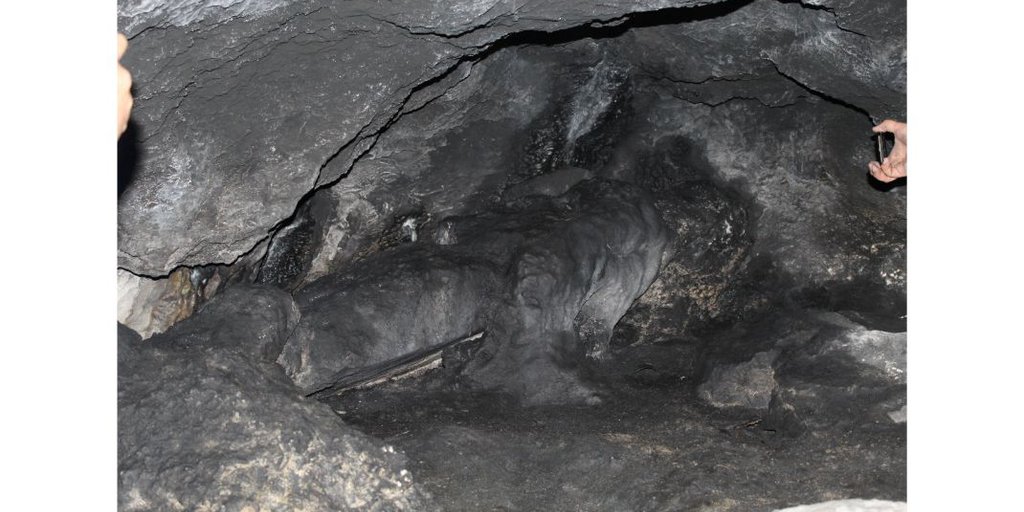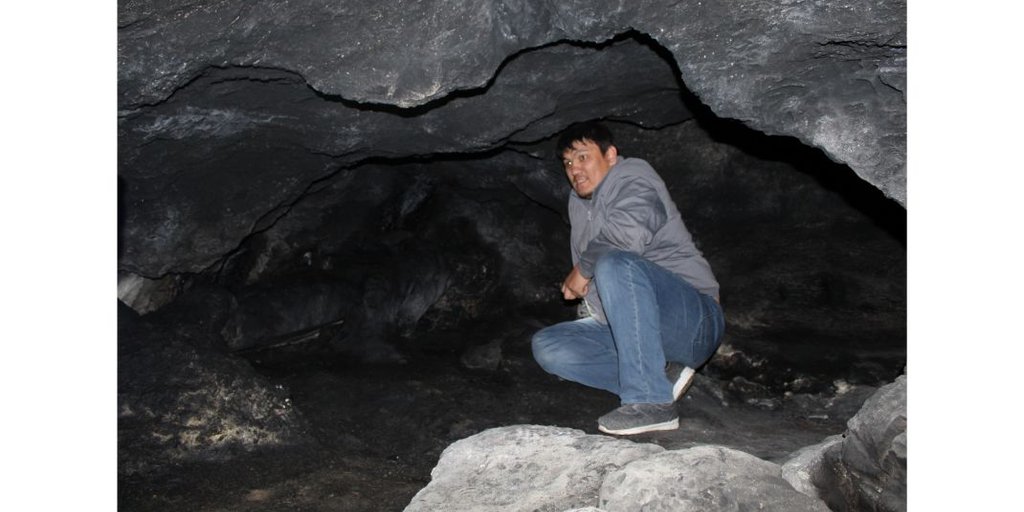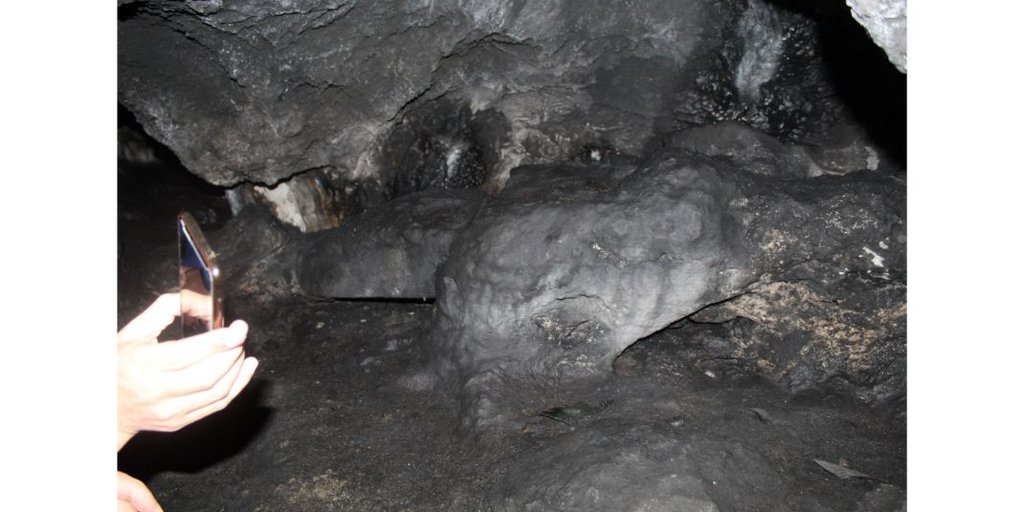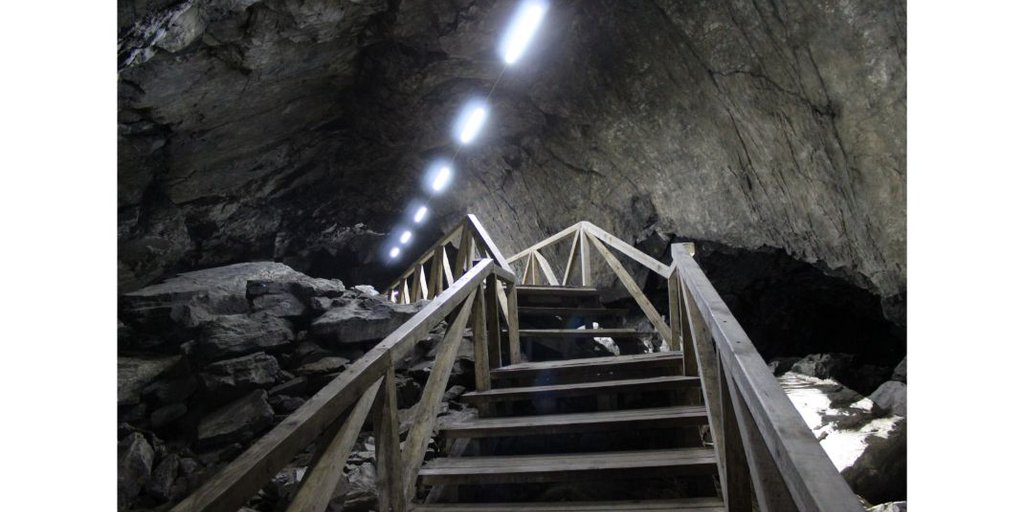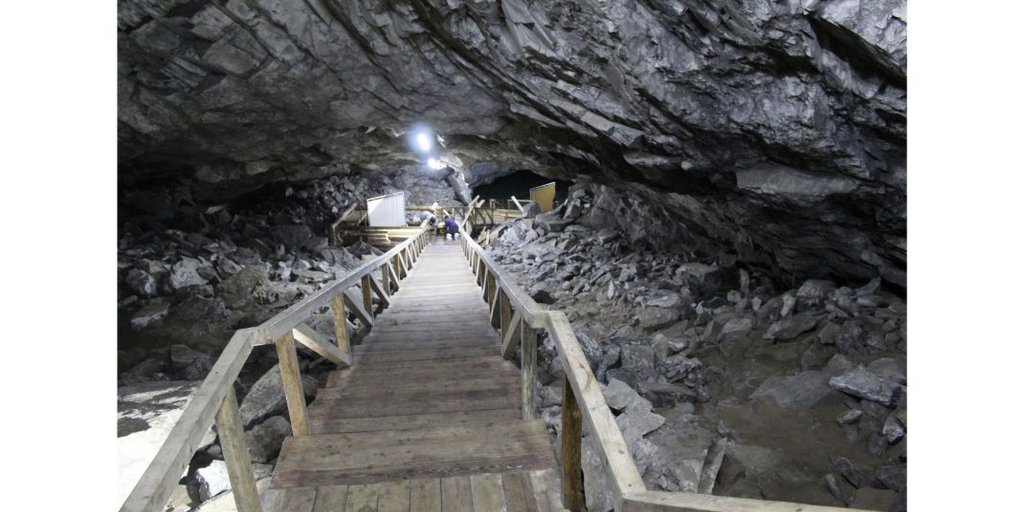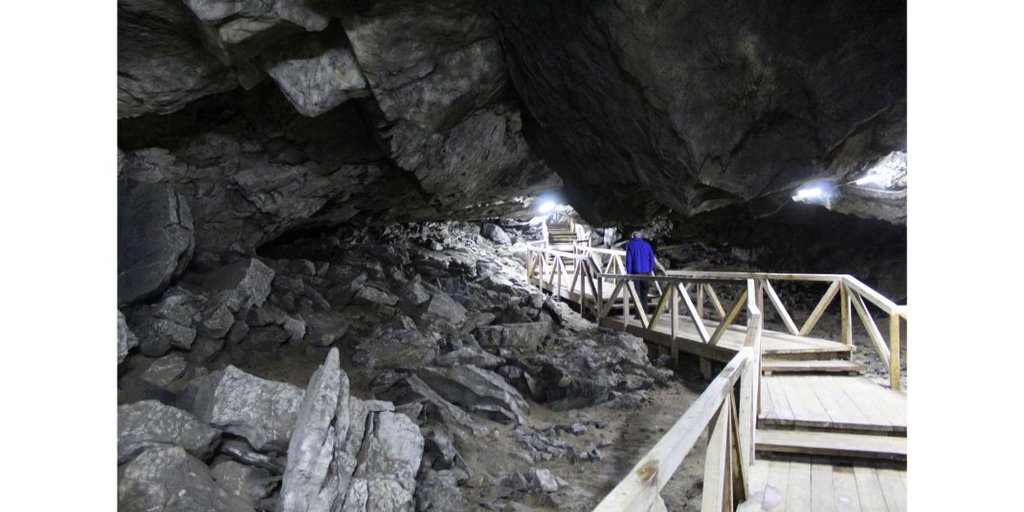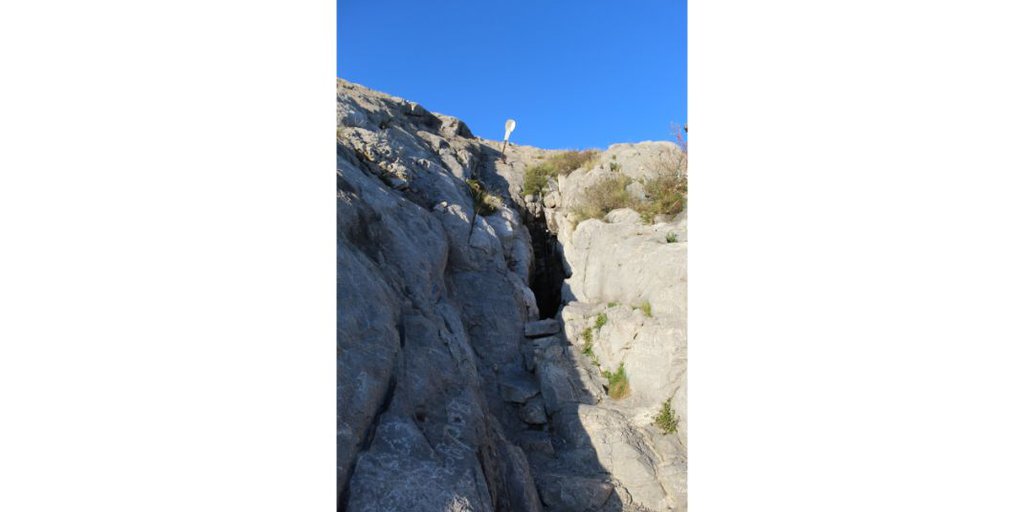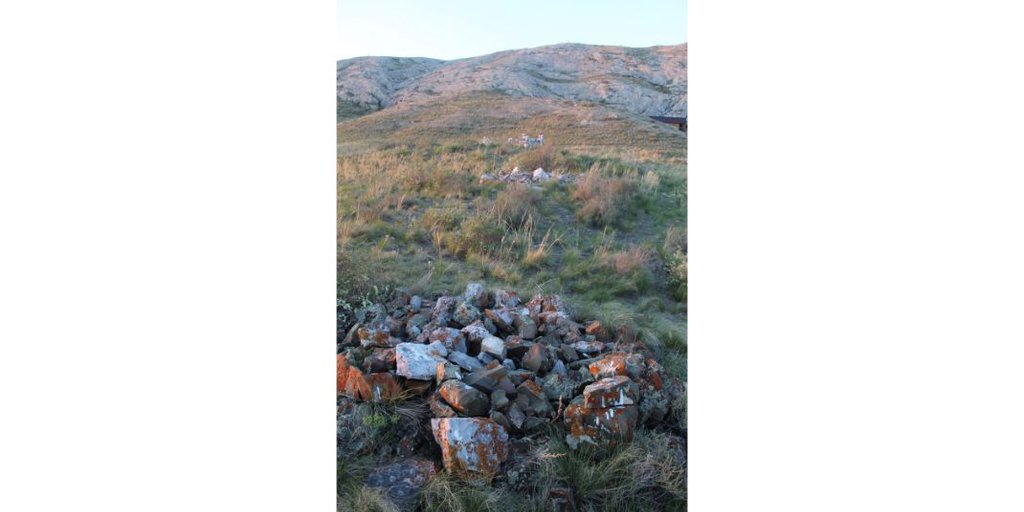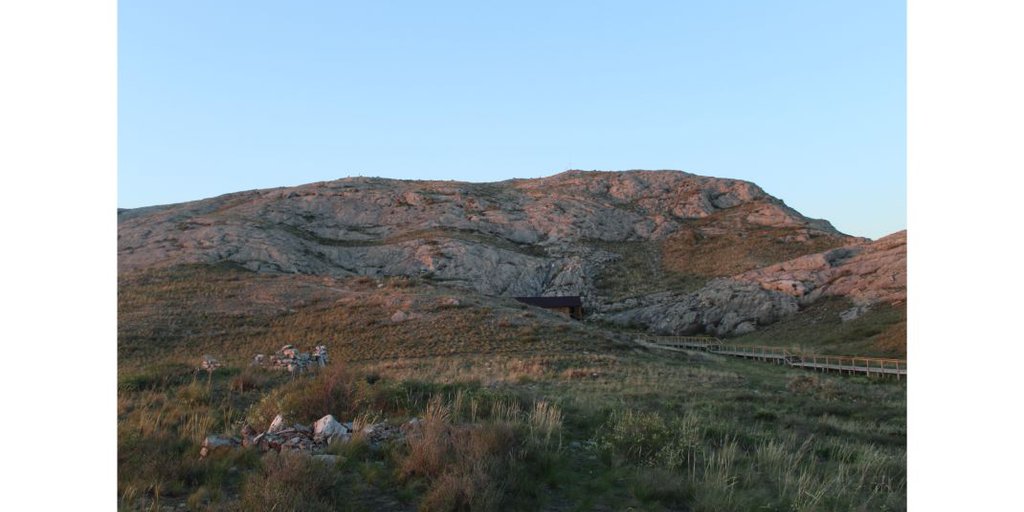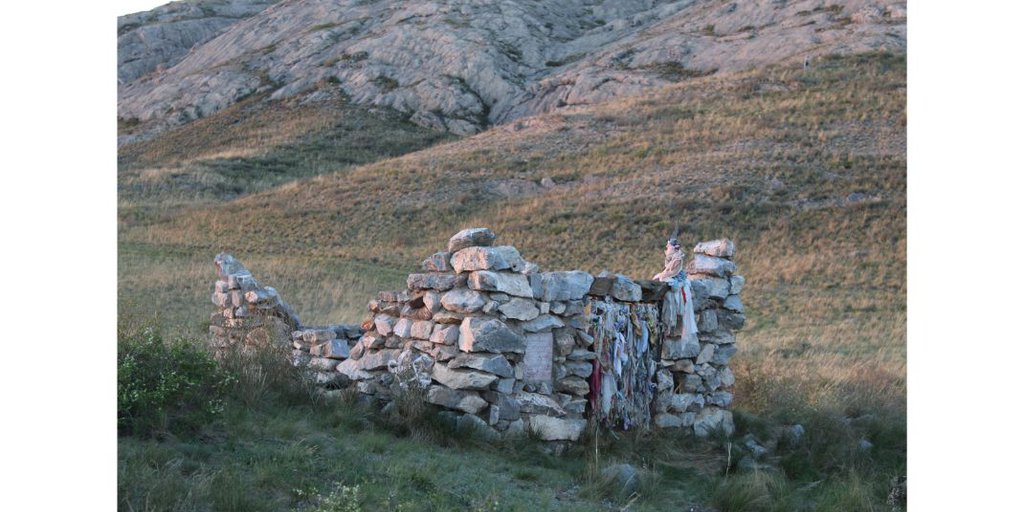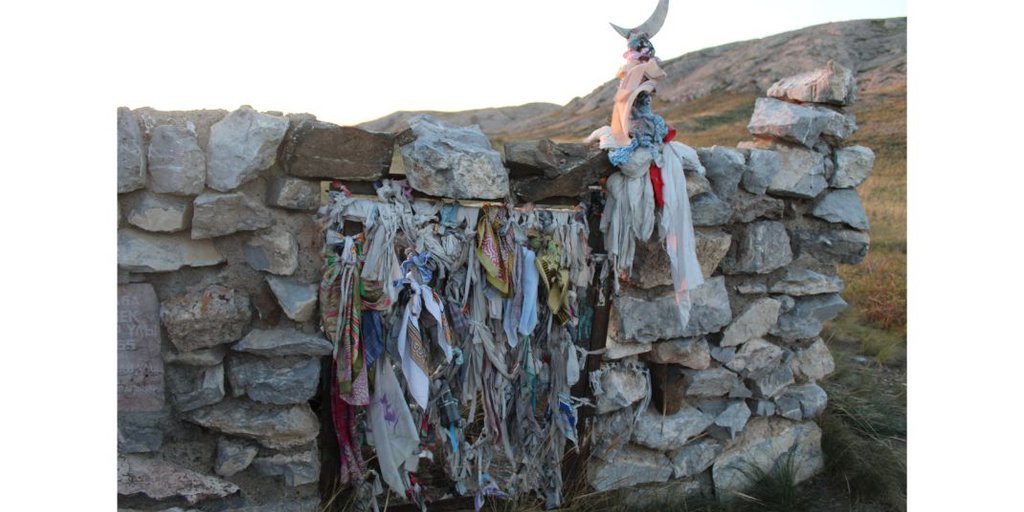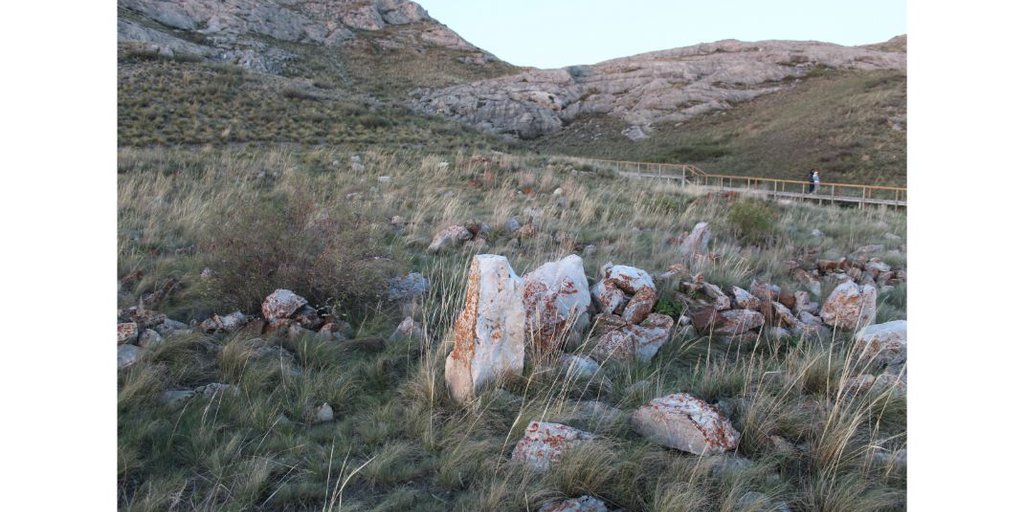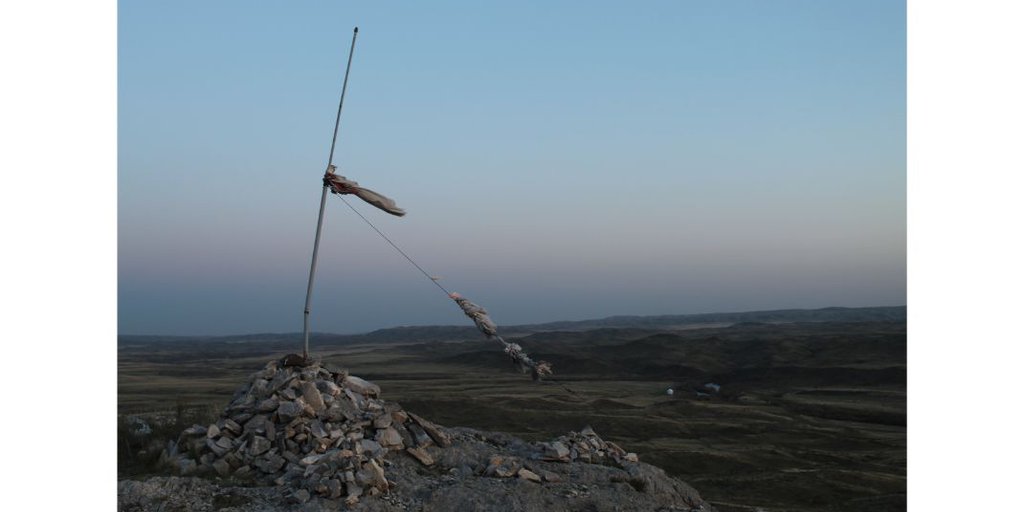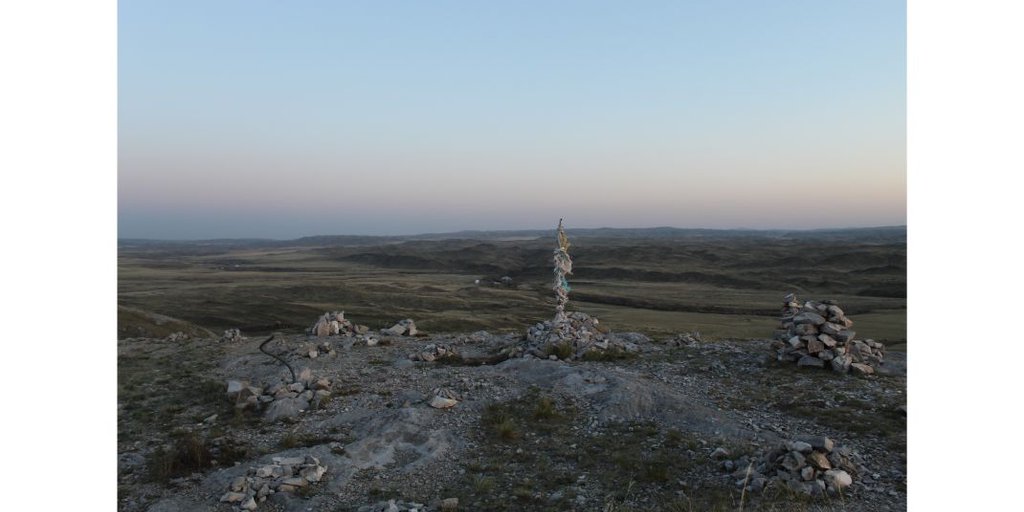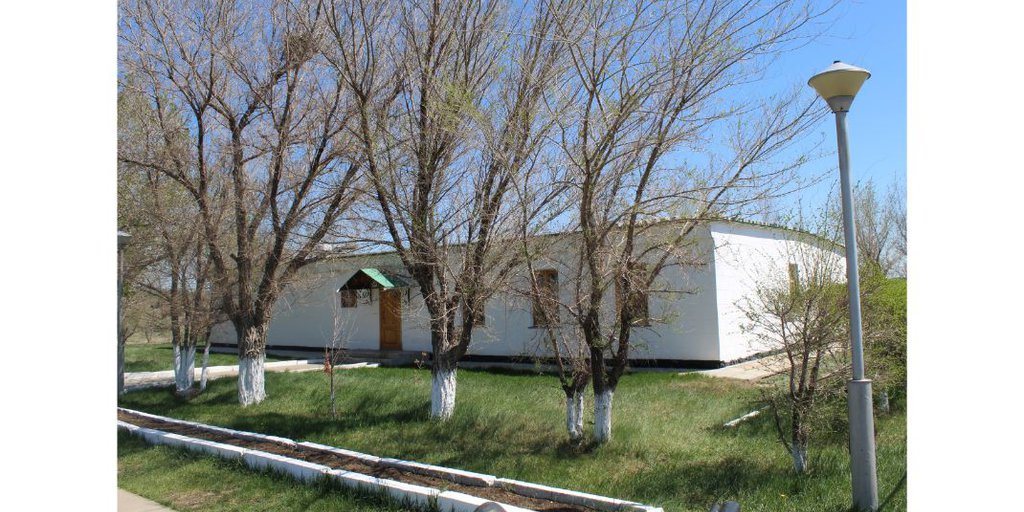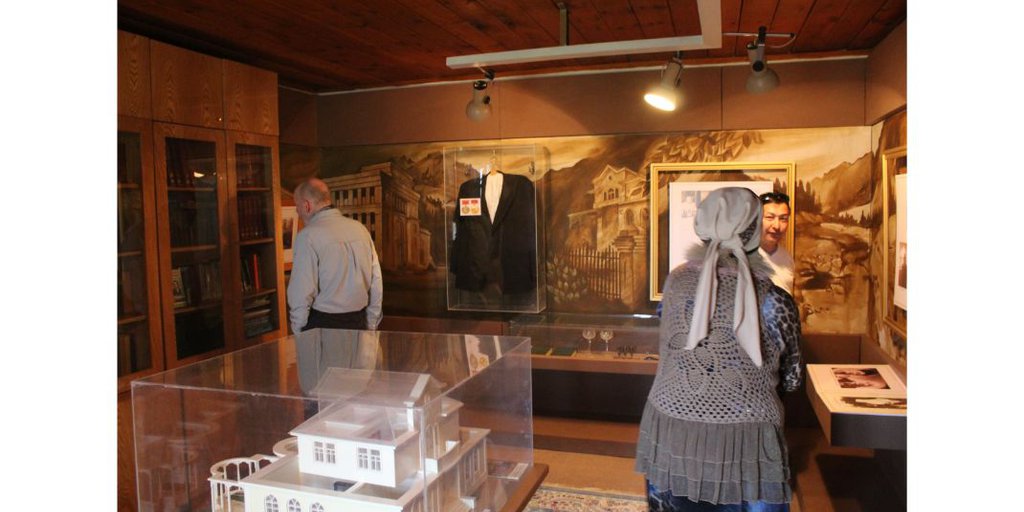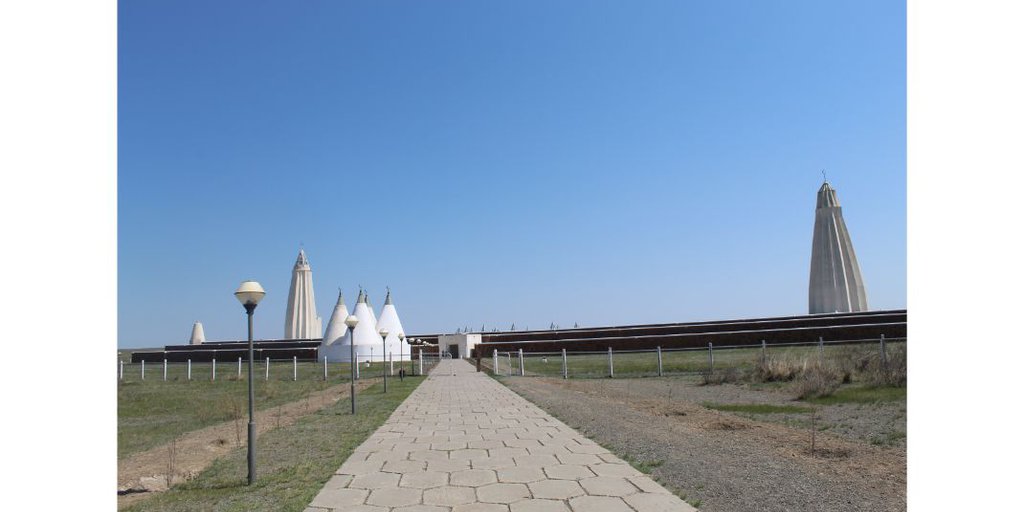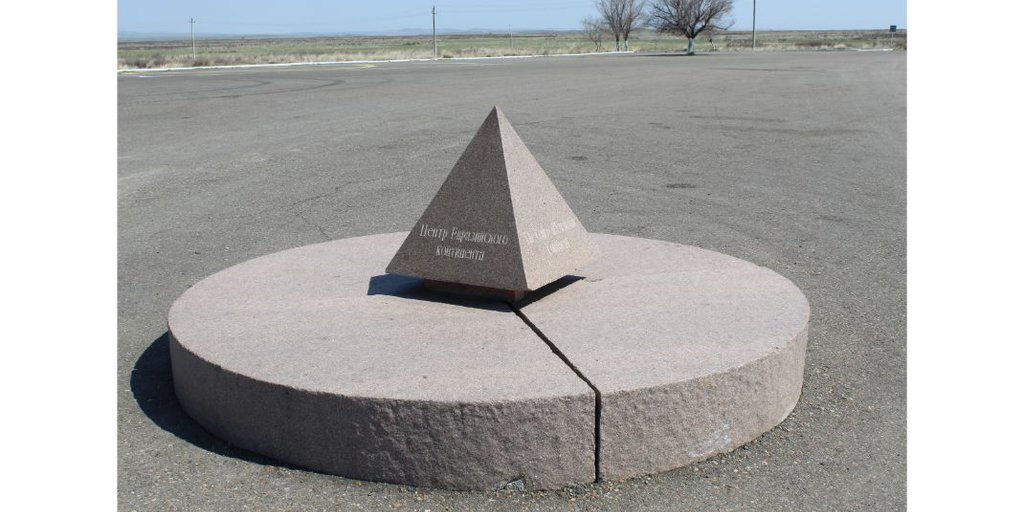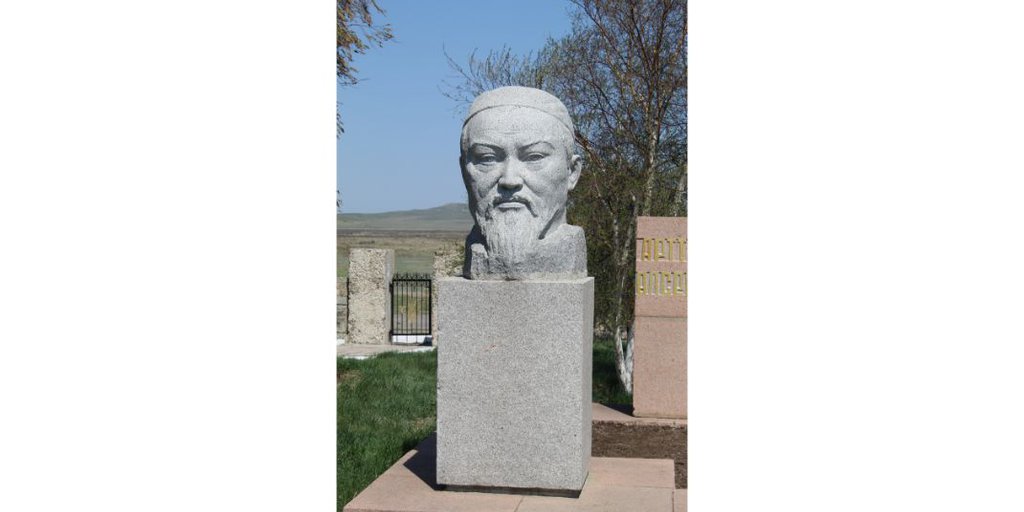Konyr-aulie, cave. Паспорт объекта

Full description
Name: Konyr-aulie. There are also variants Konnur-aulie, Konur-aulie. Kaz. Коңыр-аулие.
Site type: A cave of karst origin, the site where local residents has been worshipping for a long time.
Time and circumstances of origin: The Aktas ridge, in which the Konyr-aulie cave is located, stands out against the background of the Kazakh hills. Apart from the Konyr-aulie which located in Aktas caves, there are “Forty Caves” and “Shanyrak-Aulie”, which arose as a result of geological processes accompanied by the release of lime mass. Konyr-aulie is a karst cavity with an inclined entrance (ponora), along which limestone was washed out by water (Zhukov). An underground freshwater lake at the bottom of the cave about a hundred meters from the entrance and an average depth of 5-7 meters, has an unstable water level. Probably, the cave belongs to the corrosion-gravitational type, and the Chagan river flowing nearby played the main role in its formation.
Period of use: There is no reliable information about the use of the cave by people in ancient times. Some local historians of the East Kazakhstan region argue that in this cave, as well as in neighboring ones, it is possible to find artifacts of the Stone Age; however, archaeological excavations of a scientific type in these places have not been carried out, and single artifacts do not allow making reliable conclusions (Riddles of Time, 6:20). Information about the nature of the use of the cave by people is characterized only from the 18th-19th centuries by a greater degree of reliability, although there are numerous questions and doubts. In fact, only three sources of information about the cave have survived, which in turn are based on personal observations, as well as local legends and traditions. We are talking about a note written in 1892, published in the Siberian Bulletin, and then reprinted in Vitebsk Provincial Gazette No. 63 and Ethnographic Review in No. 1 of the same year, and later in the collection "Antiquities of the Kyrgyz Steppe and Orenburg Territory" by the famous Russian archaeologist Joseph- Antoine Castagnier in 1910. The next report about the cave is a small note of the Semipalatinsk official V. A. Bryukhanov, published in the Notes of the Semipalatinsk Subdivision of the West Siberian Department of the Imperial Russian Geographical Society in 1912. Finally, the artistic descriptions contained in the novel by Mukhtar Auezov - "the path of Abai" may contain authentic evidence of the mythological tradition associated with the Konyr-aulie cave. Although the novel was written in the 1950s, information concerning the cave may date back to the early second half of the 19th century. In one of the episodes of the novel, when young Abai and his brothers visited the cave, the significance of the cave for local Kazakhs was mentioned, who associated it with the events of the Kazakh-Dzhungar confrontation during the time of Abylai Khan, i.e. in the middle of the 18th century. Subsequently, according to the testimony of local researchers, the cave attracted local Kazakhs with its lake, allegedly curing women from infertility, and with a mysterious stone statue still lying in one of the cave compartments.
Main functions: Today the cave attracts pilgrims and tourists with its lake, the water of which supposedly has medicinal properties. Many visitors to the cave immerse their bodies in the cold water of the lake. Before that, the local shyrakshi (the keeper of the shrine) reads the verses from the Koran. In addition, believers pay homage to the lake by leaving coins in it. Some visitors also sacrifice a ram during their stay at the cave. Thus, the Konyr-aulie cave, both in the past and in the present, acts not as a resort and sanatorium site, but as a sacred place in which certain ritual actions are performed and with which a living legendary tradition is associated. The tradition of worshiping a stone statue lying in one of the cave compartments, which was observed by ethnographers at the beginning of the 20th century, has lost all of its meaning today. Most visitors do not know anything about the statue and therefore do not try to find it. The novel by Mukhtar Auezov also tells that during the time of Abylai Khan, in the first half - the middle of the 18th century the cave was used by both the Dzungars and the Kazakhs as a refuge and a military stronghold (Auezov).
Religious Affiliation: Based on the information available today, it is difficult to talk about any particular religious tradition with which the site has been associated in the past. However, some assumptions can be made. The first tip is the meaning of the cave’s name "aulie", which is an Islamic Arabic term for "holiness" or "saint." Thus, modern interpretations say that "Konyr-aulie" is the name of an ancient holy elder who allegedly hid in a cave from the worldwide flood described in the Old Testament. Having no reliable evidence regarding the age of this legend, it should be noted that the designation of the cave by the term "aulie" dates back to the 19th century, and most likely even to an earlier time. This fact alone, however, cannot serve as a reliable indication of the Islamic character of the cult associated with the cave. It can also be argued with a good reason that the worshipping a cave lake (and, possibly, a lying statue) is associated with the cult of fertility. The basis for this statement is Bryukhanov's statements about local beliefs that the cave gives children to childless women (Bryukhanov: 3). Earlier evidences that the local Kazakhs drive cattle to the cave in case of illness may also be related (Castan’ie: 150). A widespread version connected with Islam nowadays says that the cave got its name from a certain saint (Konyr-aulie), who moored here during the flood. Another legend tells about a girl who was expelled from her home and settled in this cave.
Reports of some local historians that the cave may be associated with Manichaeism do not have material or documentary evidence (Riddles of Time, 17:24). Another unsupported hypothesis says that the cave may be the burial place of Genghis Khan (Mysteries of Time, 17:45). The origin of this legend, obviously, was influenced by the name of the Chingiztau ridge, which is the part of the Aktas mountains.
It should be noted that at the present worship and ritual nature in the cave is within the strict framework of the Islamic tradition. The Koran is read before taking a bath in the lake, and many visitors sacrifice a ram. The stone figure, which previously attracted crowds of worshipers, has now lost all its meaning. This may be due to the prohibition of any form of idolatry in Islam. Conversations with pilgrims revealed that the main center of attraction in the cave is the lake and its supposedly healing waters. None of the interviewed pilgrims demonstrated knowledge about the stone figure.
The main center of attraction: All the sources listed above indicate that in the past the center of attraction of the Konyr-aulie cave was a lying stone figure in one of the cave compartments. In a note of the Ethnographic Review and Castan’ie it is said that the people flow to Konyr-aulie specially to worship the statue with a human height. It is noted that the statue depicts a woman. Around this statue "small things made of stones, beads, bronze statuettes are found" (Castan’ie: 150). Bryukhanov, who wrote his note about two decades later than the one that was published and reprinted in the Siberian Bulletin, Vitebsk vedomosti, Ethnographic Review, and with Castan’ie together provide additional details. He points out that the statue is called "Kalmyk" by the local Kazakhs. Bryukhanov also reports that the statue was already covered with a thick crust of solidified calcite and suggests that under this crust there may be a mummified human corpse or a “stone Kalmyk idol”. The recent examination of the statue by local historians led researchers to the assumption that it was made of granite, but no arguments have been presented (Stone Statue). The statue is connected to the floor of the cave by a powerful incrustation of calcite. In the same study, it is reported that local residents claim that there were two statues, but one of them was taken away by unknown people shortly before the study (Stone Statue). This information is not supported by earlier descriptions of the cave and the statue.
It should be said that one should not unambiguously associate the statue with the Oirats, since Kazakhs could describe any objects they did not understand by the term "Kalmyk", and therefore the statue may refer to another culture and historical era. However, in modern times, the significance of the statue as a center of attraction is almost completely lost. Today's pilgrims come to the cave to take a dip in the lake. According to pilgrims, its waters have a healing power, which does not only help women to become mothers, but also heals various diseases.
Another site that attracts visitors is the ancient graves located near the entrance to the cave. Bryukhanov identified these graves as Kalmyk ones and pointed out the presence of stone women there. Some of the graves have already dilapidated fences typical to Muslim burials. An excerpt from the novel "the path of Abai" also describes the graves near the Konyr-aulie cave. It is noted that representatives of various Kazakh clans of the Middle Zhuz were buried in these graves: Kereys, Argyns, Naimans, etc., which was atypical for that time. Such different types of burials in one place can confirm the legend by Auezov in his novel that Konyr-aulie and the area around it could be the site of battles between Kazakhs and Dzhungars (Auezov).
Plan: The site is a karst cave that begins with a crevice-like entrance, which is oriented to the southwest and is located 2 m above the ground. The entrance width is slightly more than a half meter and 2.5 meters high. Immediately behind the entrance there is a small corridor 3 meters long, which leads to the first hall, about 40 meters long. There are branches from it to the right and left, some of which are heaped with stones. One of the left branches leads to a small pocket, where there is a lying anthropomorphic statue of a “Kalmyk”. The central path is a descent (up to 45 degrees) that leads to an underground lake at the bottom of the cave. The descent is strongly curved: first by 10 degrees, and then, not far from the lake by 20 degrees. The length of the descent is about 100 meters. The floor of the cave is densely covered with large stones, which complicates walking by the descent. Therefore, nowadays, there is an arranged wooden platform with a handrail, which leads straight to the lake shore. In the highest part, the vaults of the cave reach 4 meters. The lake at the bottom of the cave has an approximate area of 30x40 m, but its true dimensions are unknown, since in the far part of the cave there is a low vault (Zhukov).
Features of the landscape: The cave is located in the Abai region of the East Kazakhstan region in one of the mountains of the Aktas ridge, which in turn is part of the Chingiz-tau mountain range. The area from Semey to Chingiztau is mostly steppe, except for the low rocky Semeytau ridge along the road. Near the location of the cave, the steppe landscape becomes hilly and rocky, as the road lies through the Chingiztau ridge. The Aktas Mountains are composed of white limestone. The western side of the Chingiz-tau ridge is washed by the Chaganka River. See photo gallery.
Present state: The cave has been visited by people for a long time, and its vaults and stones were covered with a layer of soot due to the torches used by visitors before the electric lighting was installed in the cave. In this regard, the current authorities carried out a sandblasting of the cave. The cave has a wooden ramp and lighting, which not only makes visiting the cave convenient, but also reduces some anthropogenic risks. Premises for the night, accommodation for workers and visitors with stove heating, a kitchen, a parking lot, a public toilet, utility rooms were built near the cave. Due to the remoteness of the place from large settlements, there is no power transmission line to the cave, and electricity is supplied by a diesel electric generator. Despite the presence of only basic living conditions, the flow of visitors is growing from year to year. This is largely due to the fact that the site was rented by a private business, as well as a certain amount of attention that the place received in the media and thanks to the activities of local historians of Semey.
Threats: The Konyr-aulie cave was not included in the list of sacred sites of national or regional significance. Any of these statuses would oblige national or regional authorities to supervise the condition of the site. Now, in fact, the site is in the power of tenants. It is difficult to say how the cleaning of the vaults of the cave with a sandblaster could affect the images or petroglyphs that might have been on the vaults of the cave. In regard with the Islamization of the ritual of visiting the cave, there is a potential threat to the lying stone statue located there.
According to V. Gushchin, a resident of Semipalatinsk, when he and his friends visited the Konyr-Aulie cave in 1955, an atomic bomb test
V. Gushchin and his companions miraculously escaped from the cave (Gushchin, Chasnyk). This information says that the cave is subject to destruction in the event of seismic activity.
Archaeologist A. Dolgushev from the TO "Archaeological Expertise" provides information that in the recent past, during the cleaning of the territory (it is not clear whether inside or outside the cave), pilgrims allegedly cleaned out all archaeological material (Riddles of Time: 6:25).
Although renting a cave by the private business has beneficial consequences for the development of tourist infrastructure around the cave, control by the regional akimat and the local municipality over the activities of entrepreneurs is necessary.
The nearest settlement: The object is located 36 kilometers southwest from the village of Medeu, and 55 km northwest from the village of Karauyl. See the photo gallery.
Other sites: The memorial complex "Mausoleum of Abai and Shakarim" is located 45 km on the B. About 120 kilometers to the northeast there are important archaeological sites of the Bronze Age and Early Iron Age - fortifications and mounds of Kokentau and Semeitau. See the photo gallery.
Aul Medeu: Small settlement (about 30 households).
Road: From the town of Semey to the village of Karauyl, the site can be reached along the asphalt road R-138. There is a gravel road from Karauyl to Medeu aul. Further, the site itself can be reached only by a dirt road, which can be flooded with water during the period of rains and floods. Thus, access to the monument may be difficult in the spring and a rainy summer.
Artifacts and manuscripts: According to archaeologist Alexander Dolgushev, there was an ancient man's staying site in the cave. He himself and the locals found isolated artifacts. Amont them there were arrowheads and piercing-cutting weapons such as a broadsword with an image of a dragon engraved on the blade. Dolgushev believes that these artifacts could belong to the Dzhungars (Riddles of Time: 6:50). The place where all of these artifacts are located is unknown. At the moment, no archaeological research is being carried out at the site.
Assessment of the current state. The Konyr-aulie cave, as noted above, is used by a private entrepreneur on a lease basis. This ensures the development of tourist infrastructure around and inside the cave. The cave has become safer and more comfortable for pilgrims to visit. As a result, the flow of tourists to the cave is steadily growing, despite the presence of only basic infrastructure, the lack of a hotel, modern amenities, and instability of power supply, relative inaccessibility and remoteness of the site from large urban centers. The cave is visited today mainly by residents of Kazakhstan, Russia and the republics of Central Asia.
Investment recommendation: The Konyr-aulie cave undoubtedly has the potential for further development as a recreational site. In the post-Soviet period, even before the improvement of the site, it had already begun to attract tourists and pilgrims, and after the start of the arrangement, the number of tourists is growing from year to year. The cave is unique for its legendary tradition that has developed around it, reflected in the novel "the path of Abai", reports of local historians of the past, modern films and articles. The healing properties of the waters of the underground lake have not been confirmed by scientists, but if this kind of research is carried out and the properties are confirmed, then we can expect even greater interest in the site. For the full development of this site, investments in road infrastructure are required, as well as the construction of a branch of power transmission lines. The site deserves inclusion in the list of sacred places of regional significance, ensuring its protection by the state and conducting archaeological research. The cave can become a part of the tourist route that will connect it with the memorial sites of Abai Kunanbayev and Mukhtar Auezov located nearby in the East Kazakhstan region and Karaganda region. In addition, the site could become a part of the route by the history of the Kazakh-Dzhungar wars, along with Ablai-Kit and Kyzyl-Kent.
Recommended Sources:
Ауэзов М. Путь Абая. Алма-Ата: “Жазуши”, 1982. С. 145-50.
Брюханов В. А. Конур-Аулиэ // Записки Семипалатинского Подотдела Западно-Сибирского Отдела Императорского Русского Географического Общества. Семипалатинск: Электро-Типо-Лит. Тор. Дом «И. Плещеев и Ко.», 1912. С. 1-3.
Гущин В. Тайны Конур-Аулие. Посвящается 285-летию Семипалатинска. Электронный файл. Предоставлен П. Жуковым.
Жуков П. Конур-Аулие. Машинописная рукопись. Предоставлена автором в электронной копии. 4 ноября 1996 г.
Загадки времени. Вып. 23. Чудеса пещеры Коныр Аулие. Kazakh TV. https://www.youtube.com/watch?v=21lUtXh4h4c
Каменная статуя из пещеры Коныр-Аулие. Машинописная рукопись. Не датирована. Предоставлена П. Жуковым в электронной копии.
Кастанье I.А. Древности Киргизской степи и Оренбeргского края. Труды Оренбургской Ученой Архивной Комиссии. Том XXII. Типо-Лит. Т-ва «Каримов, Хусаинов и Ко» в Оренбурге, 1910. С. 150.
Мамонтов И. П., Зенкина Е. П. План пещеры. Выполнен от руки. 20-22 сентября 1996 г. Предоставлен П. Жуковым в электронной копии.
Этнографическое обозрение. Издание Этнографического Отдела Императорского Общества Любителей Естествознания, Антропологии и Этнографии, состоящего при Московском Университете. 1892, № 1, по ред. Н. А. Янчука. Москва, 1892. С. 28.
Photo gallery
Map
Materials
All materials are available at the following link


